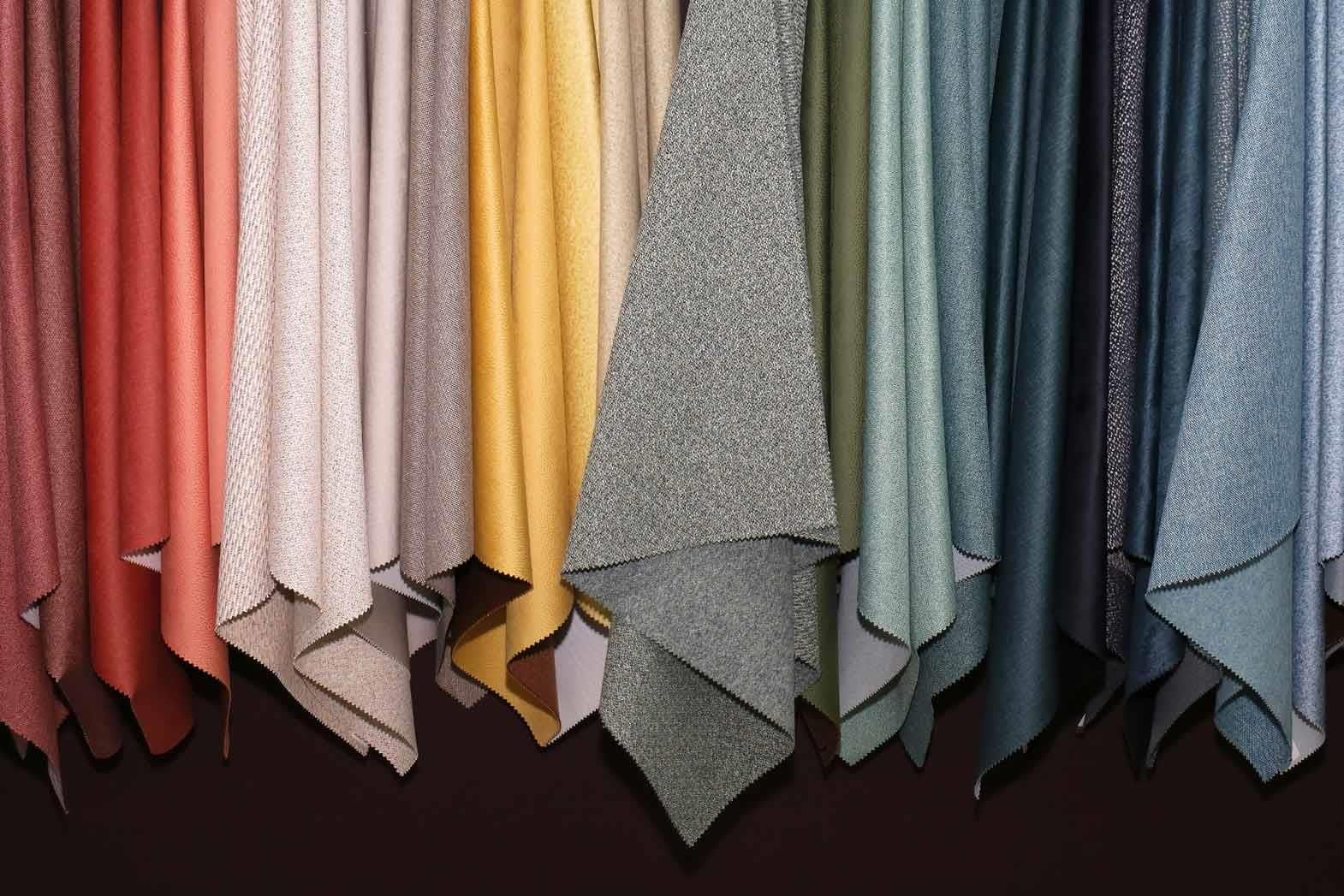Mention sustainableclothing, and
We are living in a time of opposing forces. On one hand,there is a sense of acceleration and speed dominated by amusement, fun andhigh-tech fabrics which are functional rather than sustainable. The other,weaker trend, leads us in the direction of sustainable textiles that symbolisea slower lifestyle with emphasis on quality, rather than on quantity. Thisfinds expression in what is durable, practical and timeless.
There is a sense of contradiction and duality betweenthese opposite trends. It is a well-known fact that natural fibres like cotton,linen and silk or semi-synthetic fibres like rayon and modal created fromplant-based cellulose produce methane, the potent greenhouse gas, as theydegrade. Even natural fibres go through chemical treatment in the process ofbecoming clothing. They are bleached, dyed, printed on and scoured in chemical baths.Nonetheless, their negative effects are less than those of synthetic fibreslike polyester, nylon and acrylic. The latter have the same environmentaldrawbacks, with a more serious repercussion. Since these are essentially a typeof plastic made from petroleum, they take hundreds of years to degrade. Hence,it becomes imperative to look at sustainable clothing.
Talking of sustainable clothing, the first thing thatcomes to my mind are the women weavers of the north-eastern states. The rawmaterials like cotton, silk, nettle and kauna grass are grown locally. They useboth frame looms and back strap looms made of bamboo and wood locallyavailable. Other implements used for weaving are made of the same material. Thedyes they use are natural, sourced from indigenous plants and minerals. Theirremarkable design and skill sets are unique and cannot be copied or produced byany other method. This makes the fabric unique even while it takes low-costinfrastructure. That translates into small carbon footprints.
Indigenous communities of the north-eastern states havetheir unique practices related to weaving which are eco-friendly andsustainable. For example, cotton, the most extensively used raw materialearlier, was and still is to a small extent, grown in the region, exceptArunachal Pradesh where the extreme climatic conditions are not congenial forcotton production. Meghalaya produces a considerable amount of cotton. Silk isproduced in several parts of the region, mainly Assam, Manipur, Meghalaya and Mizoram.Sericulture is still popular, mostly among many indigenous communities.
Both eri and muga silk are produced in the region. Ericulture is an age old agro-based small scale industry of this area. It meetsthe partial need of warm clothing. Moreover, eri pupae are popular as adelicacy. Men and women both culture eri unlike weaving, which is done only bythe women. The transportation of the seeds before and after rearing of cocoonsand the collection of leaves to feed the worms are done by men, while women takepart actively during rearing.
Women clean the rearing zone, take care of the worms and save them from insects. Silkworms need care, attention and affection. Often it is a community activity for village women. They help each other during their leisure hours, especially in taking the pupae out of the cocoons and during spinning. This home-based utilitarian activity purpose has achieved a status of social custom and that makes eri culture socially so significant. Among the Bodos and Rabhas of Assam, activities pertaining to eri culture are closely guarded, following which scrupulous attention is given to the sensitivity of silkworms throughout the rearing process.
For example, it is believed that menstruating girls should not enter a rearing house as that may affect the silkworms. Only women are allowed to do the rearing. They are not allowed to use cosmetics and talcum powder if they happen to enter the rearing rooms, because the delicate worms may react to the strong perfume. Women are supposed to attend the worms in clean clothes after a bath. Eri culture needs tender care and extremely hygienic conditions are maintained. To the women, rearing the worms is similar to caring for a new-born. With changing times, some of these norms are being relaxed. Many traditional silk growers are taking up other activities. Some have shifted from muga to other commercial cash crops including tea and rubber.
Most of these indigenous communities have a rich history of natural dyes. With the advent of industrialisation, the laborious culture of natural dyes has made way for chemical dyes. Now, most of the raw materials like dyed yarn are sourced from local town markets, abandoning the traditional practice of natural dyeing at home.
It is amazing to find that fabrics of fine skill and beauty are created with tools like back strap looms and frame looms that are mostly made of basic indigenous wood and bamboo. Back strap looms are simple in construction, easy to operate and cheap. They are portable, with no permanent fixtures or heavy frames. The greatest advantage with these looms is the unlimited scope for design variation. Although men help in preparation of the loom and other weaving implements, weaving is always by the women of the house.
Traditionally, no indigenous home in the region is complete without a loom. Frame looms are usually installed in open verandas or sometimes in the open courtyard or backyard. The women work in the open areas of their home throughout the year except the rainy season. They dismantle the frame loom parts and keep them safely indoors on the veranda, or under some other shade away from rain. When they are preoccupied with other work, they dismantle the frame loom. The lighter parts like the lease rods and shed rods are often tied in bundles and hung on to hooks on the walls. Sometimes, yarn hanks, yarn balls and other weaving paraphernalia also make their place with dismantled parts. The advantage of frame looms is that these are cheap, easy to make, easily dismantled, stored and reassembled when needed.
The women of these indigenous communities are a repository of knowledge of the domestic science like cooking time, taste, digestibility and know-how of milling and husking characteristics of grain. That is how much grain breaks during milling. The storage of rice has traditionally been the woman's domain of knowledge. Women are aware of different agents causing post-harvest damage namely, insects, rodents and fungi. They are aware that grains stored in the kitchen tend to face less fungal attack because of the heat. They know how much space is to be provided between the flattened bamboos in traditional granaries to prevent rats from entering while providing sufficient air movement to lessen fungal infestation. They also have the knowledge of several local plants and herbs that repel insects.
Traditional knowledge is based on practical teachings and experiences passed on down the generations. For the indigenous communities anywhere, it is the knowledge of their environment and their ways of life. It is embedded deep and the way they have survived. In remote villages of the north-east, young girls play with toy looms and pick up weaving through observation -- from the selection of place of warping to setting up warping tools accurately and the method of warping. Daughters collect yarn discarded by their mother to make the warp for their toy looms. It is interesting to see how these children meticulously carry out warping exactly the way it is supposed to be done.
Weaving is like playing. When they grow older, their toy transforms into a real loom making weaving one of their ways of creative exploration. Curious girls sit and watch their mother or other women. They observe each step from preparation of warp to fixing the beam and the intricate details of how the shuttle passes between the two sheds and how the warp is carefully lifted with the porcupine quill. Eventually, when the girl can understand technical details, her first lesson starts under the guidance of her mother or grandmother.
Weaving is an art perfected over years. Each piece woven at home has a story. It speaks of natural creativity and love of colour, designs and motifs of the women who create them. It proclaims the strength of tradition. These women seem to almost paint their colourful dreams on the woven pieces with simple looms. The immense patience required is reflected in the creations. Each piece and its design is a treasured heirloom cherished for generations as a token of love. The quality of weaving is not a purely spontaneous expression. Rather, it is even more extraordinary because it appears both as a phenomenon of a region as well as of an ethnic group. Weaving is a regional practice and each sub-region has its own variation of the style. Nonetheless, there are instances of overlaps in the design vocabulary of these indigenous communities.
However, changing times have led to the death of many traditional arts and crafts and the birth of new adaptive and innovate skill sets, ideas and techniques. Influences of non-indigenous people also bring about changes. From being hill communities to dwelling in the plains and taking to settled cultivation as opposed to the earlier practice of shifting cultivation, these indigenous communities have come a long way.
Today, there are families who have given up their traditional lifestyle and embraced modern life. They give little or no importance to weaving or any other textile traditions. Their daughters get formal education and take up professional employment. With changing political and social circumstances, women are stepping into newer arenas.
Modernisation and commercially produced yarn and textiles are hampering indigenous techniques and processes involved in weaving. It is unfortunate that skills required for weaving are often taken for granted and the weaver's identity is rarely known beyond the family or community. Loss of traditional ways of indigenous life means loss of knowledge. For most indigenous communities, communication of traditional knowledge is hampered by competition from other cultures that capture the imagination of the youth. They are struck by technology that teaches them non-indigenous ways and limits the capacity of elders to pass on traditional knowledge to the young. However, it cannot be denied that still many women in most parts of the north-eastern states weave on their back strap looms and still make their own traditional lower garment.
Weaving for leisure, a widely prevalent activity from time immemorial, has now been reduced largely to an activity that generates livelihood opportunities for many in rural areas. So, pitched against industrialisation, much less weaving is done for self-consumption. Though this practice is time-consuming, weaving seems to have been a rewarding investment. The concentration and contemplation required in building the harmony in colour, design and execution is almost akin to meditation. But times have changed and rural women no longer have the leisure or inclination to make elaborate designs on woven fabrics. Women are no longer restricted to doing household work only. Women are educated, they learn various life skills and hold jobs. This leaves little or no time for weaving.
These days, indigenous garments of these communities are made on power looms. They have changed in material, size, motif and design. From being a humble expression of a woman of the house, the garment has now risen to a fashion statement. Over the last couple of decades or so, these traditional design vocabularies have been used as a decorative tool by entrepreneurs. The designs and motifs are no longer the self-expressions of the individual weaver. These are dictated by professional designers and are copied by power looms for mass production.
In a country like India where handloom is the second-largest industry after agriculture, it is exigent that measures are adopted to preserve the traditional knowledge of weaving yet while catering to modern needs. It is also important that these traditional crafts be preserved for their aesthetic and cultural values. Many international buyers are looking at India as a source of hand spun and hand woven textiles. This international demand must be utilised. We ought to place our attention on traditional knowledge and skill sets that our country already has, not only for the sake of generating employment but also to ensure reduction of carbon footprints by adopting these sustainable ways of production.









Comments